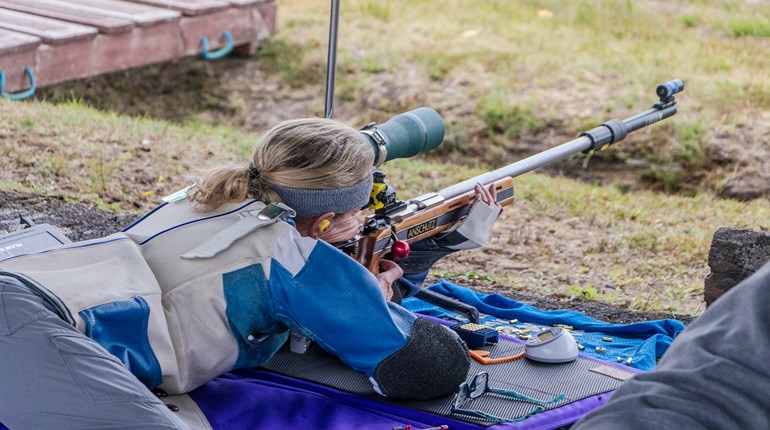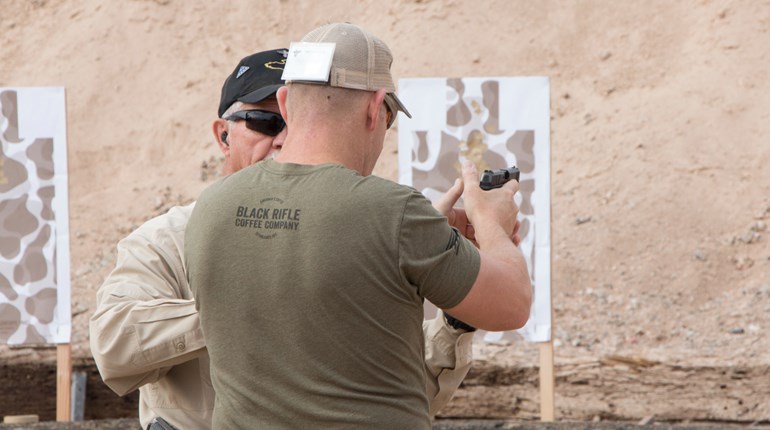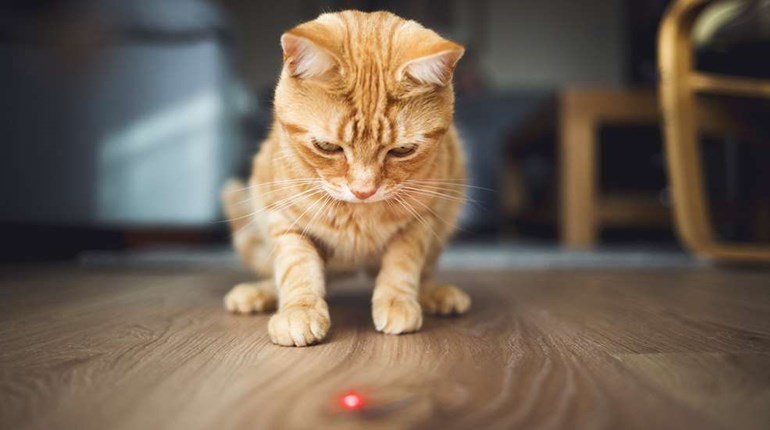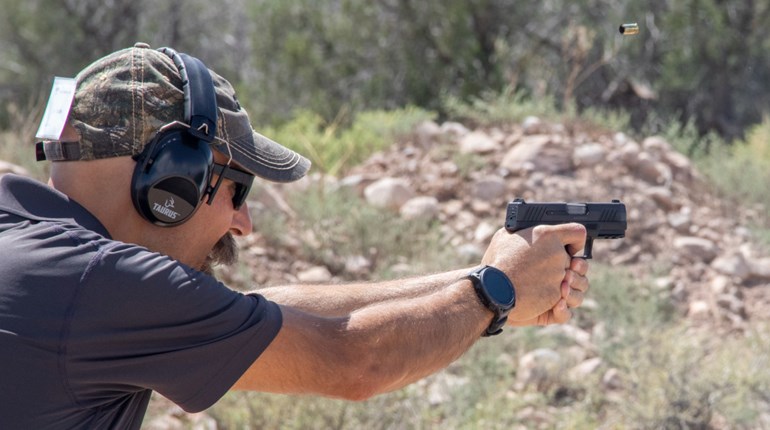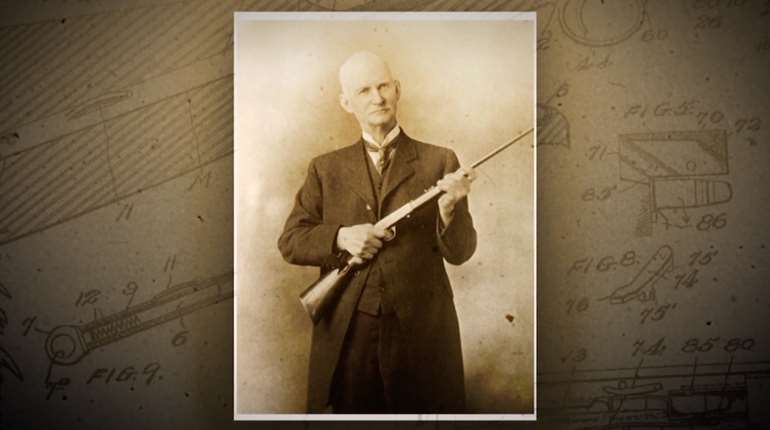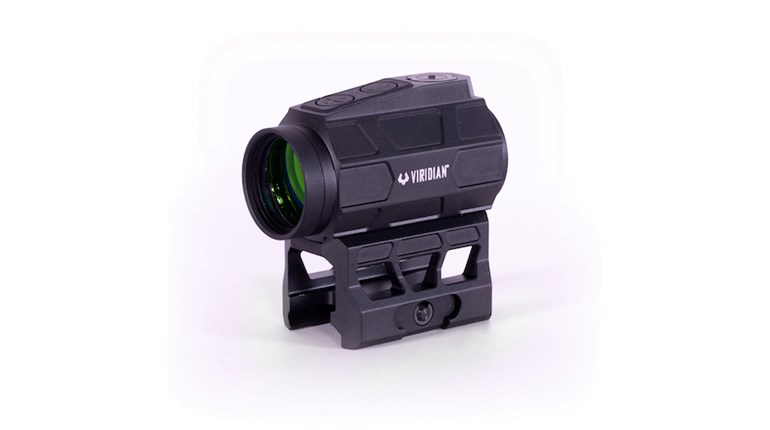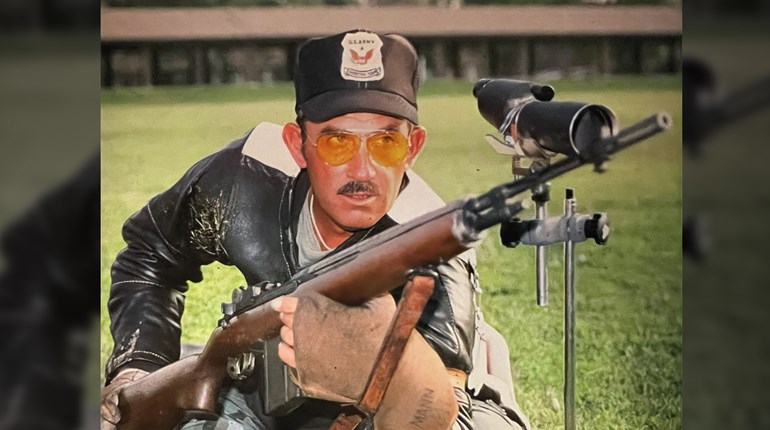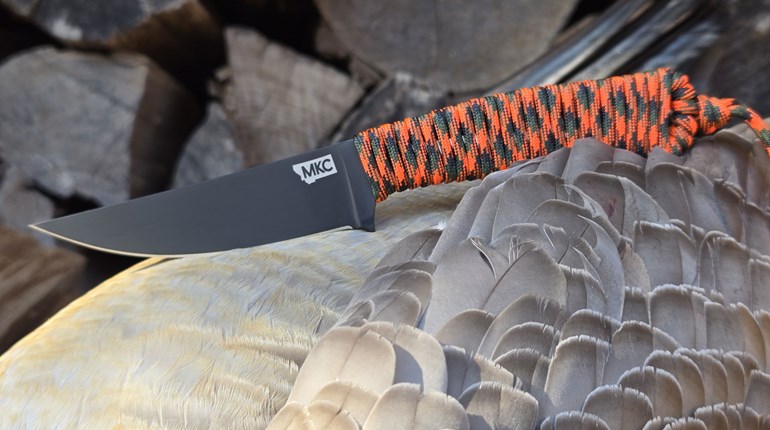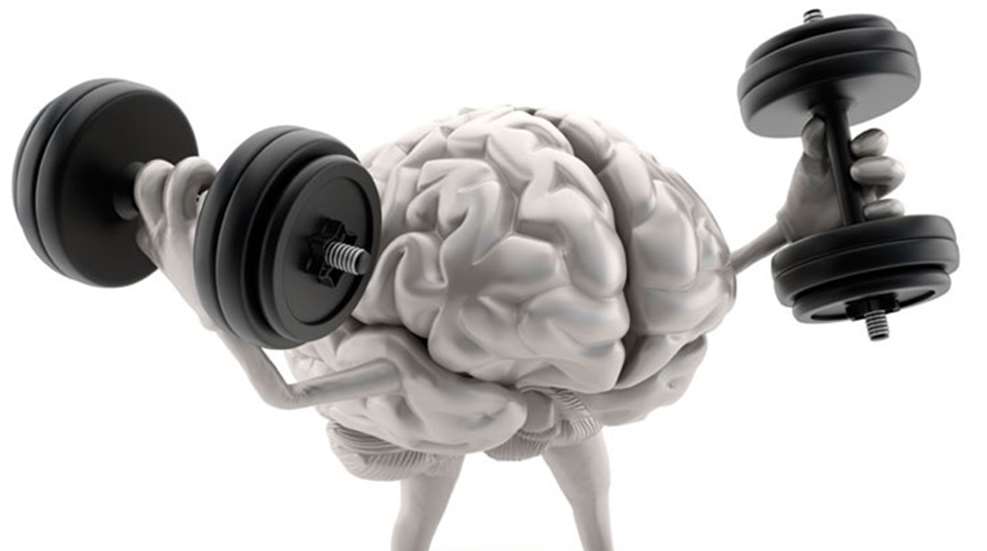
From the vault: How to manage the mental game in competitive shooting with Dr. Don Lullen. As transcribed from a 1984 NRA Silhouette National Championship seminar where Dr. Lullen was a panelist.
Mental Training Techniques
By Don Lullen, D.D.S.
Anyone who has ever competed in sports has experienced the stress and nervousness brought on by the possibility of winning.
Imagine yourself up on the firing line shooting very well. Everything is going right, and you are in contention to win the match if you can just finish the last bank of targets with a good score. You put your pistol up and knock down the first three targets when suddenly you realize that all you have to do is hit one of the last two targets to win. As you begin to aim your pistol, your heart beat increases and sweat begins to bead up on your forehead. Looking through your sight, you can see your wobble area increasing. You go ahead and try to break the shot as the sight goes by. The shot goes over the animal. Now you have to hit the last target, or you'll lose the match. You put the pistol up and come down on the last animal. The sights settle on the target. You think, "This is it, shoot it!" You apply 16 pounds of pressure to a two-pound trigger and the shot goes way out the bottom. Match pressure has gotten to you, and you lost the match by one target.
There are certain techniques you can use to control the pressure or nervousness brought on by competition. I've discussed the problem of match pressure with a number of top-level international competitors including Ragnar Skanaker, Sweden's Olympic medalist, and Terry Anderson, the U.S. National Champion and Pan-American gold medalist in rapid-fire pistol. Below is what I've learned.
The first step is learning how to relax. It takes practice, but you can teach yourself how to do it.
One of the best methods for learning how to relax is called progressive relaxation which involves the systematic tensing and relaxing of various muscles in the body. By comparing the two states, completely tensed muscles and completely relaxed muscles, you will be able to recognize more easily what a true state of relaxation feels like. There are a number of good products available which will talk you through this exercise, but with a little practice you can learn to do it on your own.
To begin, find a quiet place with a comfortable chair or couch that supports your entire body. Loosen any tight clothing, settle back and close your eyes.
When in a relaxed state, learning is enhanced and technical training is more efficient
Tense the muscles in your right arm by making a fist. Concentrate on the tightness and the tension in the muscles. Hold the tension for about 10 seconds. Now let the muscles relax all at once and notice the difference between the completely tensed muscles and totally relaxed muscles. Feel the tension flow out of the muscles, and how comfortable it is to be relaxed. Take three slow deep breaths, relaxing more with each breath. Rest for a moment and then move on to the left arm. Repeat the process by tensing the muscles in the left arm for about 10 seconds. Concentrate on the tension and experience the burning in those totally tensed muscles and then relax once again. Breathe three slow deep breaths, once again relaxing with each breath.
Repeat the process with the various muscle groups in the body until the entire body has been systematically tensed and relaxed. Tense and relax muscle groups beginning with the right arm, then proceed to the left arm, right leg, left leg, buttocks, lower torso (stomach and back), upper torso (chest and shoulders), neck, face, and finally, the entire body. Don't forget to breathe at least three times after each tension phase. (If you have high blood pressure, don't tense the whole body all at once as that will raise blood pressure slightly during the tension phase.)
After you have tensed and relaxed your entire body, continue to lean back for a few moments concentrating on and enjoying the deep state of relaxation that you have attained. Slowly begin to arouse yourself. Take a few deep breaths. Open your eyes slowly. In the beginning, this process will take about 20 minutes to complete.
As you go through this process think the words "let go." Every time you feel the relaxation spread through your body, exhale slowly and think the words "let go."
Do this every day for a couple of weeks. I've done this almost every day for seven years. You will find that these relaxation exercises will benefit you in a lot of areas besides shooting. I'm a dentist and found I had a lot of muscle tension when I was working on a patient. I could feel tension in my shoulders that I never knew was there before. When you tell yourself to "let go" and relax, it's gone.
When in a relaxed state, learning is enhanced and technical training is more efficient because you are able to concentrate much more effectively. There is no interference from tensed muscles which are not needed for shooting. The brain receives the information without a lot of "static" generated by anxiety and learns more quickly.
Once you have learned to get into a relaxed state, you can begin to work on concentration. One of the ways to do this is through mental rehearsal. Mental rehearsal is the technique of shooting a shot, series of shots, or even a match in your mind. It has several purposes including developing and maintaining technique, adjusting technique for conditions, and developing tactics for particular situations. It should be noted that mental rehearsal works only if the basic shooting methods have already been developed on the line.
The more vivid these images are, the more effective the mental rehearsal.
To do this effectively, you must be as relaxed as possible. Use whatever method of relaxation that works the best for you. In this exercise, imagine yourself in the shooting position from the point of view of the shooter, not as an observer. Try to imagine not only the visual picture but also you sense of balance, grip pressure, and smell—in fact, all of your senses. The more vivid these images are, the more effective the mental rehearsal.
To begin, think about the sight. (I concentrate on the dot with a scope, and with iron sights I concentrate just on the front sight.) Spend several minutes thinking just about the sight. See how long you can concentrate on the sight. It's not easy to maintain concentration without having other thoughts intrude. Let any other thoughts go out of your mind. Think about the dot or crosshair.
When you have practiced this for two weeks, you can go to the next step in which you actually rehearse the entire match.
Terry Anderson, who was on the 1980 Olympic Team for rapid-fire pistol, has a tape recorder on which he has recorded the commands for the whole match in sequence. (Rapid-fire has 8-, 6- and 4-second stages.) He hears the range commands, and when the target turns, he mentally raises his gun and imagines firing each of his five shots.
Begin by getting into a relaxed state and then go through the match. Imagine the range commands, the ready commands, and the 30 seconds to load. Feel yourself breathing, imagine your body in shooting position. Attain a vivid image of your hold and stance. Imagine a full two-and-a-half minute cycle. Imagine 30 seconds after the command to load. Imagine the crosshair or dot right on the target. See it sitting there waiting for the shot to break. Allow your body to take over the shot and feel the surprise as the trigger breaks. Hear the shot. See and hear the target fall.
You can actually shoot smaller groups if you allow your subconscious to shoot the shot.
We are normally taught to hold the gun as still as possible, wait for it to settle down on the target, and then shoot the shot. This is fine, the best way to begin, but you can actually shoot smaller groups if you allow your subconscious to shoot the shot. Hold the gun as still as possible, initiate the trigger pressure and allow the gun to go off by itself. With enough practice, the subconscious will cause the gun to fire when it is lined up properly. Conscious effort to make the gun go off moves the gun and makes performance erratic.
It is important to practice perfect technique as you will reinforce strongly any shooting style you introduce to the imagination.
If you are good at relaxation, you can get into what is called the "Alpha state." With electrodes, you can measure different brain states—Alpha, Beta, Theta, etc. Beta is very conscious thinking such as when we are talking. Alpha is the very interesting and productive state where you are the most creative. If we are in this state, we can allow things to happen.
The idea of getting into an Alpha state is not new. International rifle shooters have been doing it for quite a while. Margaret Murdock, 1976 Olympic medalist, has shown me her diary. In it, she describes the feeling of each part of her body as she shoots. Football, basketball and other professional sports teams also use this technique.
Memorize how each part of your body feels when you get into your position. Do this without dry firing or ammunition. Just practice your hold. Feel each muscle group. In your mental rehearsal, feel your muscles in the position they are in while shooting a match.
With these exercises, you begin to build something solid in your mental background to back you up when you stand up on the line and get nervous. You can tell yourself, "Let go!" and get into a relaxed state. You can imagine the dot sitting on the target and the shot going off.
Mental training is the kind of training that the best Olympic shooters get most excited about.
Mental rehearsal is practiced anywhere and at any time, including just before shooting, but never while shooting. I go through this cycle two to three times a day in my office or at home, and gain practice that I couldn't' otherwise have had. Who can practice twice a day? No one, but you can benefit by imagining the match through mental rehearsal.
The other technique I recommend for training at home is dry firing. I shoot more shots mentally than I dry fire. I dry fire more shots than I fire with live ammunition. You can reinforce the techniques you have learned by dry firing.
Mental training is the kind of training that the best Olympic shooters get most excited about. They have their equipment and they have it right. Sure, you have to learn the good positions and have everything right, but once you are ready to come to the top, you have to learn the mental techniques that get your through the more difficult situations. This system helps create a positive attitude. When you stand up there in a match, you are doing things you have done many times before both in practice and in rehearsal.
See more: The Mental Game: Getting Back "In The Zone"













